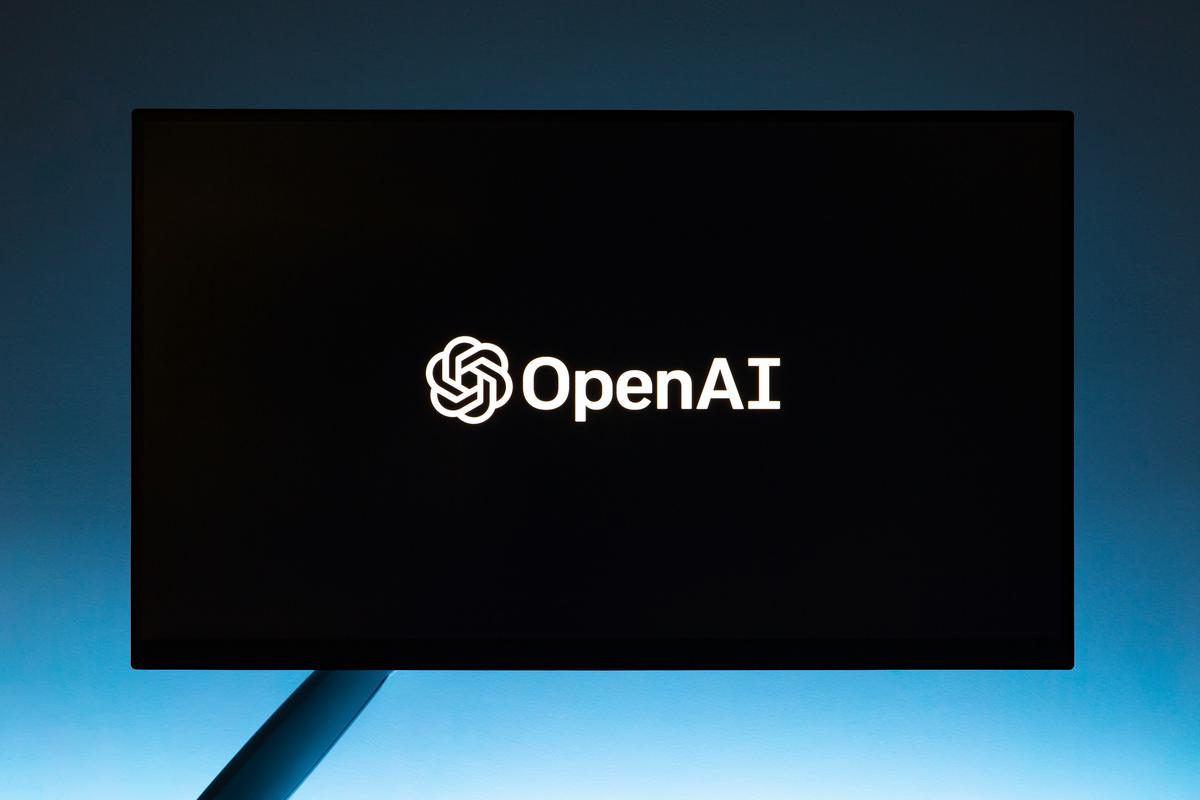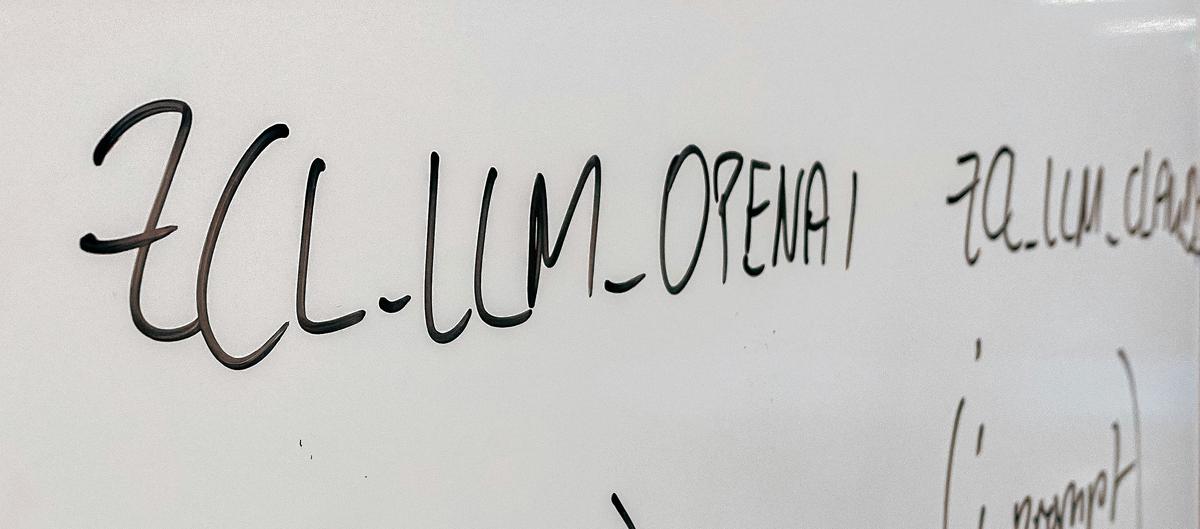In the realm of artificial intelligence, few innovations have captivated the collective imagination quite like ChatGPT, a testament to the pioneering spirit of OpenAI. At the confluence of ambition and technological prowess, the origins of this conversational marvel can be traced back to the foundation of OpenAI—a collective resolve fashioned by visionaries including Elon Musk and Sam Altman. Their shared goal was nothing short of revolutionary: crafting AI that serves the entirety of humankind while fostering open collaboration. As we embark on an exploration of ChatGPT, from its technical intricacies to its societal reverberations, we invite you on a journey that mirrors the evolution of AI itself—an odyssey from nascent theory to transformative reality.
Origins of ChatGPT and OpenAI’s Mission
Table of Contents
- 1 Origins of ChatGPT and OpenAI’s Mission
- 2 Technical Breakdown of ChatGPT
- 3 Impact of ChatGPT on Society and Industry
- 3.1 The Ripple Effects of ChatGPT on Different Sectors
- 3.2 Reinventing Job Roles and Skill Requirements
- 3.3 Legal and Ethical Considerations
- 3.4 Enhancing Healthcare Delivery
- 3.5 Transforming Education and Research
- 3.6 Reinforcing Cybersecurity Measures
- 3.7 Revolutionizing Entertainment and Content Creation
- 3.8 Shifting Marketing Strategies
- 4 Innovations and Future Developments
- 5 Real-world Applications and User Experiences
OpenAI Sparks A Revolution With ChatGPT
In the fast-paced world of technology, few innovations cause real revolutions. But when they do, they change the game entirely. That’s what happened with OpenAI’s introduction of ChatGPT. It’s a tool that’s not just a step forward—it’s a giant leap for mankind in the realm of artificial intelligence (AI).
ChatGPT, a variant of the GPT (Generative Pretrained Transformer) model, has become the talk of the tech community. It’s a form of AI that can understand and interact with human language like never before. Picture a robot that doesn’t just follow commands but can have a conversation, understand context, and even show a touch of humor. That’s ChatGPT.
Why is it a big deal? Before ChatGPT, interacting with AI felt like talking to a very, very old computer—clunky and limited. ChatGPT shattered those limitations. It brought AI into our daily lives, making it more like chatting with a smart friend than issuing commands to a machine. You can ask it anything from solving complex math problems to creating a poem, and it does so with surprising flair.
The secret sauce is its extensive training on a wide variety of internet text. By learning from this vast source, ChatGPT can generate responses that feel incredibly human. It’s not just about answering questions; it’s about understanding nuance, context, and even the subtext beneath our words.
OpenAI didn’t just build a better chatbot; they built a platform that innovators and problem-solvers across industries can use. Education, customer service, programming—these are just a few areas where ChatGPT is making waves. Need to automate customer support? ChatGPT can handle it, providing personalized and immediate responses. Want to create an educational tool that engages in real dialogue with students? ChatGPT can be your virtual tutor.
What’s more, ChatGPT isn’t static. It’s ever-evolving. With each interaction, it learns, refines its language skills, and becomes more adept at understanding us. That means it’s not just revolutionary; it’s a revolution that continues to unfold.
The impact of ChatGPT is undeniable. It doesn’t just perform tasks—it opens doors to new ways for technology and humans to interact. OpenAI has indeed fueled a revolution, setting the stage for an AI-integrated future that feels less like science fiction and more like everyday life. It’s an exciting time to be alive for tech enthusiasts and an even more exciting time to be a part of the AI transformation that’s just getting started.
And there you have it—ChatGPT, the spearhead of a tech uprising, designed to think, talk, and innovate alongside us. Ready or not, the future of AI conversation is here, and it’s more human than anyone could have imagined.

Photo by flenguyen on Unsplash
Technical Breakdown of ChatGPT
Titled: “The Engine Behind ChatGPT: How It Understands and Responds Like a Human”
Peel back the curtain on ChatGPT, and one finds a sophisticated maze of algorithms and computational processes at work. It’s like a digital brain that’s been fed a steady diet of human conversation, learning not just words, but context and subtleties of language. So what exactly gives ChatGPT its impressive conversational prowess?
At the heart of ChatGPT lies a complex neural network architecture known as the Transformer. Think of it as the brain’s neural pathways, enabling it to process and predict language patterns. This neural network, specifically a type of model called GPT (Generative Pre-trained Transformer), learns to generate text by recognizing patterns and sequences in the data it has been trained on.
Transformer models are not new, but the scale of ChatGPT’s training data and the efficiency of its algorithms set it apart. It’s been trained on diverse datasets encompassing a vast swath of textual internet data. This training allows it to grasp the nuance of human language, idiomatic expressions, humor, and even pop culture references.
Another key element is ChatGPT’s ability to learn and adapt through what’s called Reinforcement Learning from Human Feedback (RLHF). In this process, human trainers provide conversations and rank responses, teaching the model what constitutes a good answer. It’s a bit like training a pet; rewards guide it towards the desired behavior.
Furthermore, ChatGPT is equipped with the ability to perform granular tasks that augment its communication abilities. From translation services to coding help, the AI broadens its scope beyond mere conversation. It does so by using the same base architecture but finetuning it with specific datasets for specialized tasks.
Finally, ChatGPT’s architecture is designed to handle multi-turn dialogue effectively. Instead of evaluating each message in isolation, it considers the context from the entire conversation, much like how humans recall past statements to keep a conversation flowing smoothly.
Put together, these technologies empower ChatGPT to provide responses that are not just accurate but contextually relevant, maintaining coherency over long stretches of dialogue, which is no small feat. The seamless synthesis of neural network architectures, training methodologies, and adaptive algorithms catalyzes its proficiency. It’s clear that the combination of massive data, advanced models, and continuous learning are the engines of ChatGPT’s conversational dexterity. As this technology evolves, the boundary between human and AI-powered communication continues to blur, ushering us into an era of unprecedented digital interaction.

Impact of ChatGPT on Society and Industry
The Ripple Effects of ChatGPT on Different Sectors
As the tech world continues to marvel at the capabilities of ChatGPT, it’s important to analyze the broader impact that this AI phenomenon is casting across various sectors. Let’s dive into the tangible changes and adjustments industries are making in the wake of ChatGPT’s rise to fame.
Reinventing Job Roles and Skill Requirements
In the job market, ChatGPT is a game-changer. Roles that were traditionally reliant on human expertise in drafting and communication are being reconsidered. With AI capable of generating reports, emails, and even code, employers are now emphasizing creativity and strategy over what was once considered essential knowledge. Employees are expected to evolve, harnessing AI to enhance productivity rather than compete against it.
Legal and Ethical Considerations
The legal sector is being pressed to define new ground rules. Issues around copyright, misinformation, and data privacy are emerging with AI able to generate content that feels human-authored. Lawyers are busy crafting new guidelines, while ethical discussions are intensifying to ensure AI use aligns with societal values.
Enhancing Healthcare Delivery
In healthcare, ChatGPT is proving to be a valuable resource. It’s supporting medical professionals by providing quicker access to medical literature and suggesting diagnosis and treatment plans. This AI tool is not replacing doctors but rather augmenting their expertise, allowing them to make more informed decisions and spend more quality time with patients.
Transforming Education and Research
Educators are recalibrating their methods as ChatGPT becomes a go-to assistant for students. The focus is now on teaching students how to critically evaluate information and use AI responsibly rather than just memorizing facts. Meanwhile, researchers are leveraging this technology to sift through vast datasets and accelerate the pace of discovery.
Reinforcing Cybersecurity Measures
Security experts are on their toes as they incorporate AI models like ChatGPT into their armor against cyber threats. They are also identifying potential vulnerabilities AI could pose, such as generating persuasive phishing messages. Cybersecurity strategies are rapidly evolving to counterbalance these risks.
Revolutionizing Entertainment and Content Creation
In entertainment and media, content creators are experimenting with AI to brainstorm ideas, draft scripts, and even compose music. This isn’t devaluing human creativity but rather propelling it to new heights by removing the initial barriers to creation. The result? More diverse and innovative content.
Shifting Marketing Strategies
Marketers are rethinking their approach as AI-aided content personalization becomes more sophisticated. ChatGPT is enabling hyper-targeted campaigns and is reshaping customer service with responsive AI chats. Brands are finding new voices and strategies to stand out in an AI-influenced landscape.
Through these sector-specific examples, we can see ChatGPT’s profound influence. It’s not just a shiny new tool; it’s a harbinger of systemic change. As sectors continue to pivot and adapt, the importance of critical thinking, adaptability, and collaboration becomes clearer. ChatGPT is not the endgame—it’s the catalyst for a new era where human potential is augmented by artificial intelligence, not overshadowed by it.

Photo by krititara on Unsplash
Innovations and Future Developments
Expect the Uncharted: A Glimpse into OpenAI and ChatGPT’s Forthcoming Breakthroughs
As the tech glitterati keenly anticipate what OpenAI will roll out next, one fact is crystal-clear: ChatGPT has only scratched the surface of its potential. Leveraging the power of GPT (Generative Pretrained Transformer) models, OpenAI is hurdling towards an era where innovation knows no latitudes.
Interpreting Behavioral Nuances: Anticipate AI that doesn’t just read text; it interprets tone, sentiment, and nuance with an acuteness that will shatter precedents. Such advancements could mean AI that personalizes responses more empathetically, aligning with human emotions and cultural contexts more seamlessly.
Enhanced Customization: As OpenAI presses on, expect ChatGPT to morph into a chameleon, offering personalized experiences. It won’t just be about exchanging information but tailoring entire digital landscapes to suit individual user preferences, learning styles, and professional needs.
Augmented Creativity: ChatGPT is poised to burgeon into a co-pilot for creativity. Beyond grammar correction and text completion, envisage AI that collaborates with designers and creators to ideate and refine artwork, storyboard, and even compose music, expanding the horizon of creative possibility.
Autonomous Optimization: With AI growing smarter, tasks like coding and debugging can transition from human keyboards to the virtual hands of AI. ChatGPT’s descendants might offer to optimize themselves, proposing upgrades and areas of development, minimizing the tech-lag that often impedes progress.
Bridging Human-AI Collaboration: OpenAI is likely to pave the way for AI counterparts that work alongside humans. Imagine a team where AI members assist in decision-making, offering data-driven insights which might be elusive to the human mind, enhancing teamwork and project outcomes.
Realizing the “Digital You”: A profound innovation on the horizon is the creation of digital personas—sophisticated AI entities that resemble an individual’s way of thinking and communicating. Such digital twins will redefine online interactions, privacy, and identity.
Intricately Secure Systems: Security will leapfrog into the future with ChatGPT’s offspring. These systems will be trained to preempt security threats and neutralize them. They may even negotiate with potential hackers, finding resolutions before a breach occurs.
Pervasive AI Ethics: As AI grows in capability, so does the responsibility regarding its application. Future iterations of ChatGPT will likely come bundled with advanced ethical frameworks, ensuring that all AI-human interactions are guided by moral standards respecting privacy and consent.
In the panorama of tech evolution, ChatGPT is not the final act—rather, it’s the overture. OpenAI is orchestrating a symphony of innovation with peaks that seem insurmountable today. What’s next is not just an iteration; it’s a genesis of unprecedented AI capabilities poised to redefine the digital sphere entirely. Stay plugged in; this show is far from over.

Photo by andrewtneel on Unsplash
Real-world Applications and User Experiences
ChatGPT: Practical Applications Transforming Everyday Life
In the whirlwind of technological advancements, users have deftly adapted to incorporating ChatGPT into their daily lives, leveraging its capabilities to streamline tasks and enhance productivity. Here’s a look at the practical, real-world applications of ChatGPT that go beyond the surface-level interactions.
- Coding Made Simpler: Programmers, hang up your bug-searching hats! ChatGPT is aiding developers by suggesting code snippets, debugging, and even writing entire sections of code. It’s turning coding from a solo marathon into a collaborative sprint.
- Language Learning Partners: Language educators and learners are using ChatGPT as an interactive tool. From practicing conversational skills to understanding grammar nuances, ChatGPT is the new-age language partner that never tires.
- Personal Assistant Revolution: Daily schedules can be hectic. Users now delegate tasks to ChatGPT like setting reminders, making reservations, and summarizing emails. It’s like having a personal secretary, minus the coffee runs.
- Customer Service Reimagined: Tired of hold music? Companies have enlisted ChatGPT to provide instant customer support, handling inquiries and resolving issues swiftly, making “Your call is important to us” actually feel genuine.
- Content at Scale: Content creators are leveraging ChatGPT to outline articles, generate creative writing prompts, and even suggest edits. It’s like having an on-demand muse and editor all in one.
- Business Intelligence: Business professionals and analysts are employing ChatGPT to scour databases, extract insights, and generate reports. It’s transforming raw data into strategic intelligence efficiently.
- AI-Powered Tutoring: Students struggling with homework are finding an ally in ChatGPT. It helps break down complex problems into understandable steps, turning ‘Aha!’ moments into routine.
- Writing Assistance: No more staring at blank pages. ChatGPT aids writers in overcoming writer’s block by suggesting ideas and phrases, ensuring the flow of words never runs dry.
While these applications hint at a future intertwined with AI, users are just scratching the surface. The ingenuity of incorporating ChatGPT into daily tasks hints at a future where technology doesn’t just assist but elevates the human experience to unprecedented levels. With every keystroke and query, we march towards a world where AI like ChatGPT is an invisible yet indispensable ally.

Through the lens of ChatGPT’s journey from concept to global influence, a narrative emerges—not only of exceptional technological achievement but also of a reshaped horizon brimming with possibilities. Whether we engage with its current applications or indulge in speculation about its future iterations, the mark of ChatGPT on society and industry is indelible. As OpenAI continues to navigate the vast expanse of AI potentials, one thing remains certain: the harmonious symphony of machine learning and human creativity will continue to compose a future where the extraordinary becomes commonplace, reshaping our world with every conversation initiated and every query answered.

I’m Dave, a passionate advocate and follower of all things AI. I am captivated by the marvels of artificial intelligence and how it continues to revolutionize our world every single day.
My fascination extends across the entire AI spectrum, but I have a special place in my heart for AgentGPT and AutoGPT. I am consistently amazed by the power and versatility of these tools, and I believe they hold the key to transforming how we interact with information and each other.
As I continue my journey in the vast world of AI, I look forward to exploring the ever-evolving capabilities of these technologies and sharing my insights and learnings with all of you. So let’s dive deep into the realm of AI together, and discover the limitless possibilities it offers!
Interests: Artificial Intelligence, AgentGPT, AutoGPT, Machine Learning, Natural Language Processing, Deep Learning, Conversational AI.





